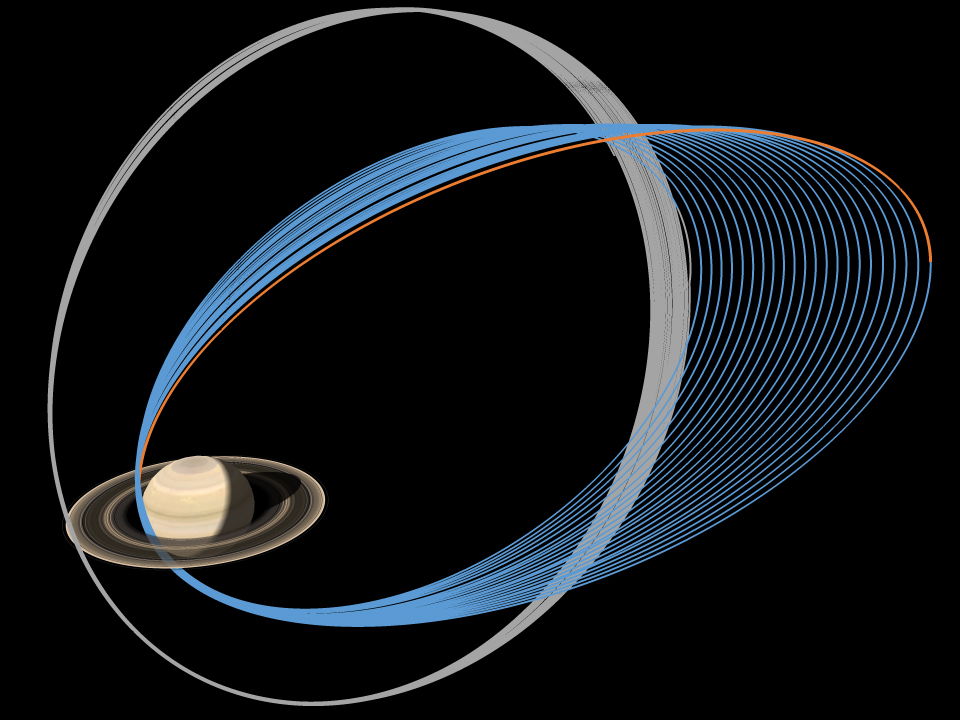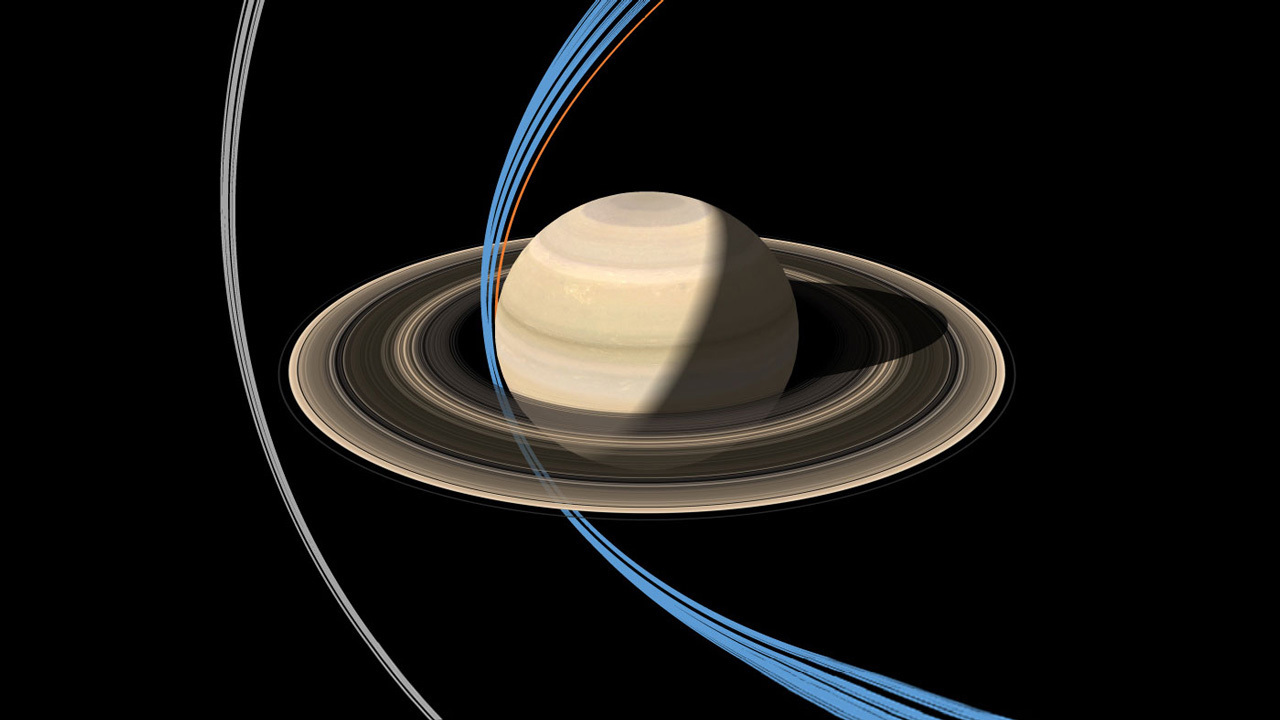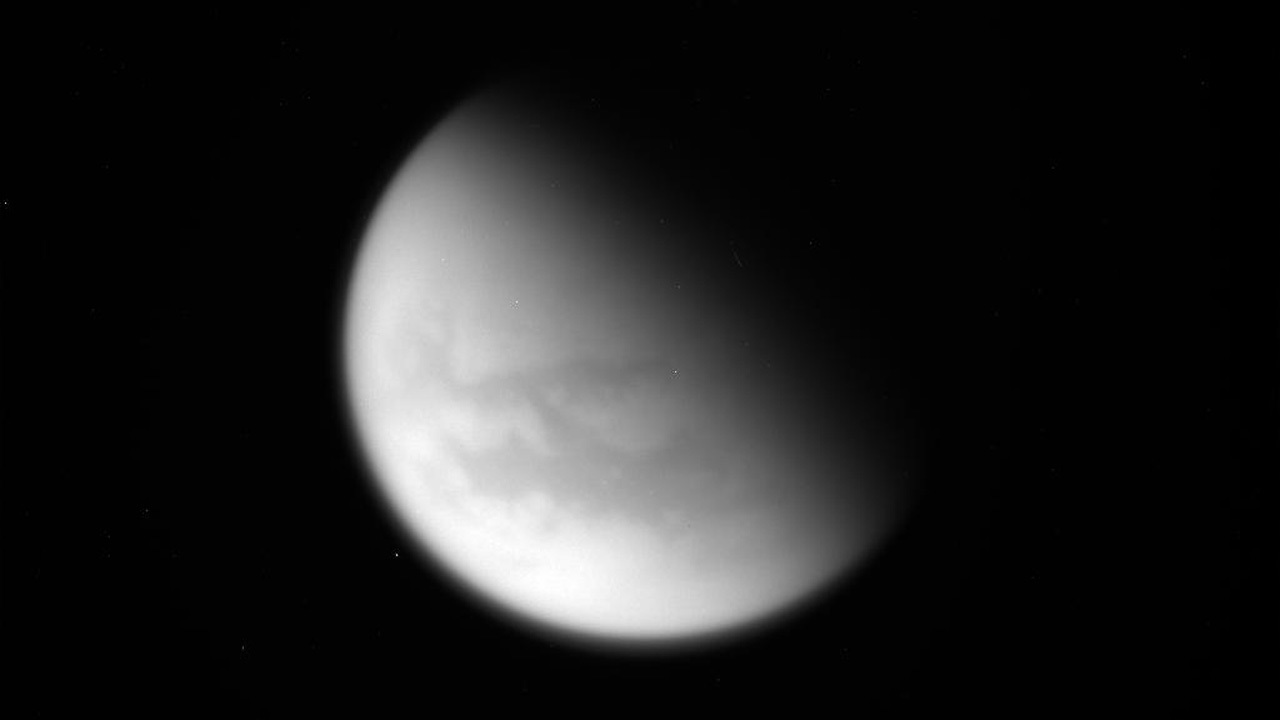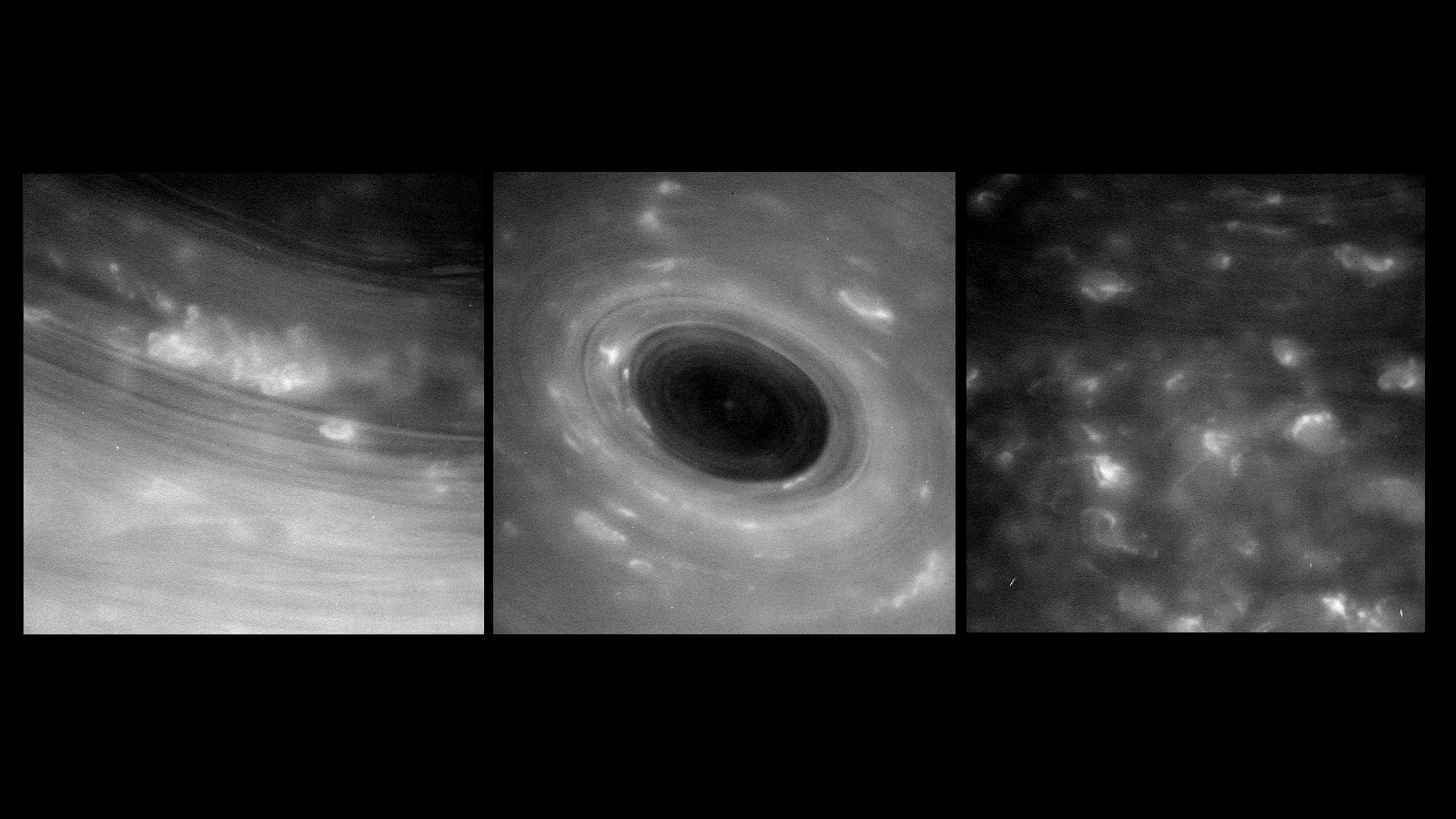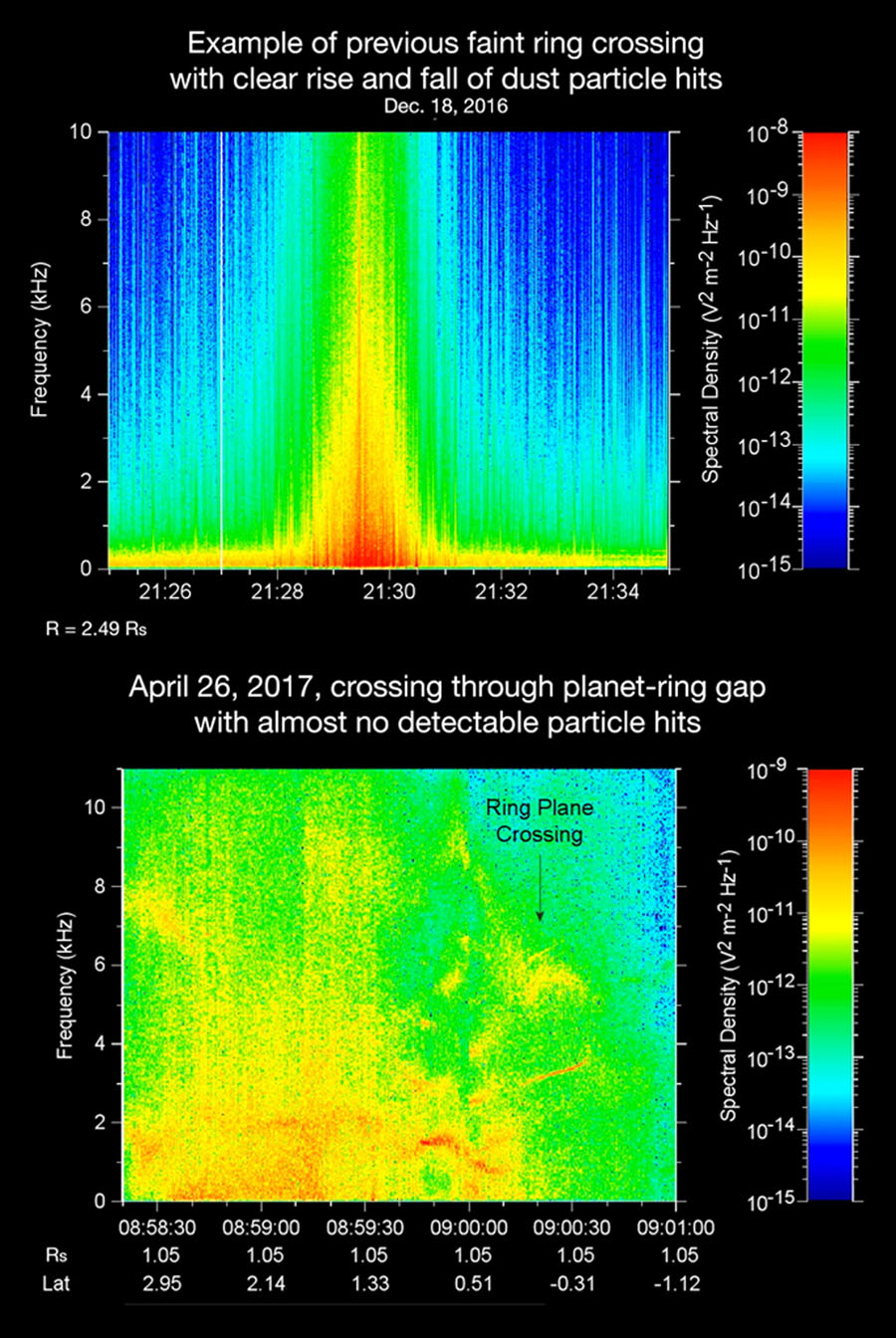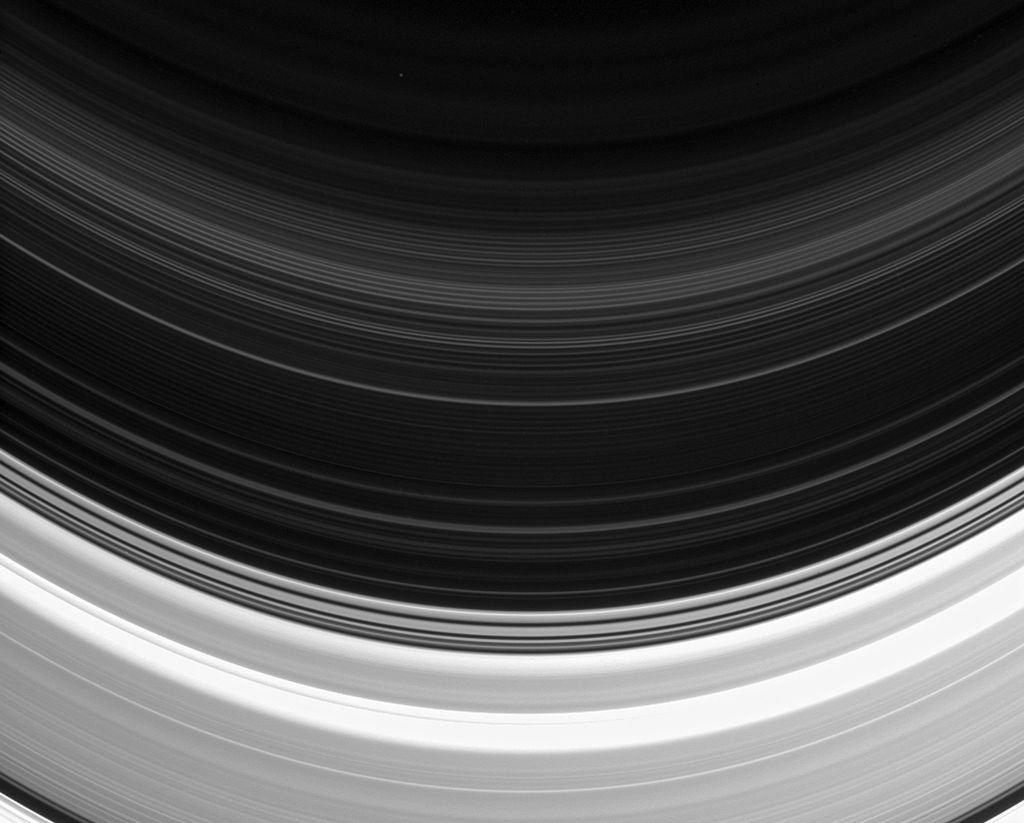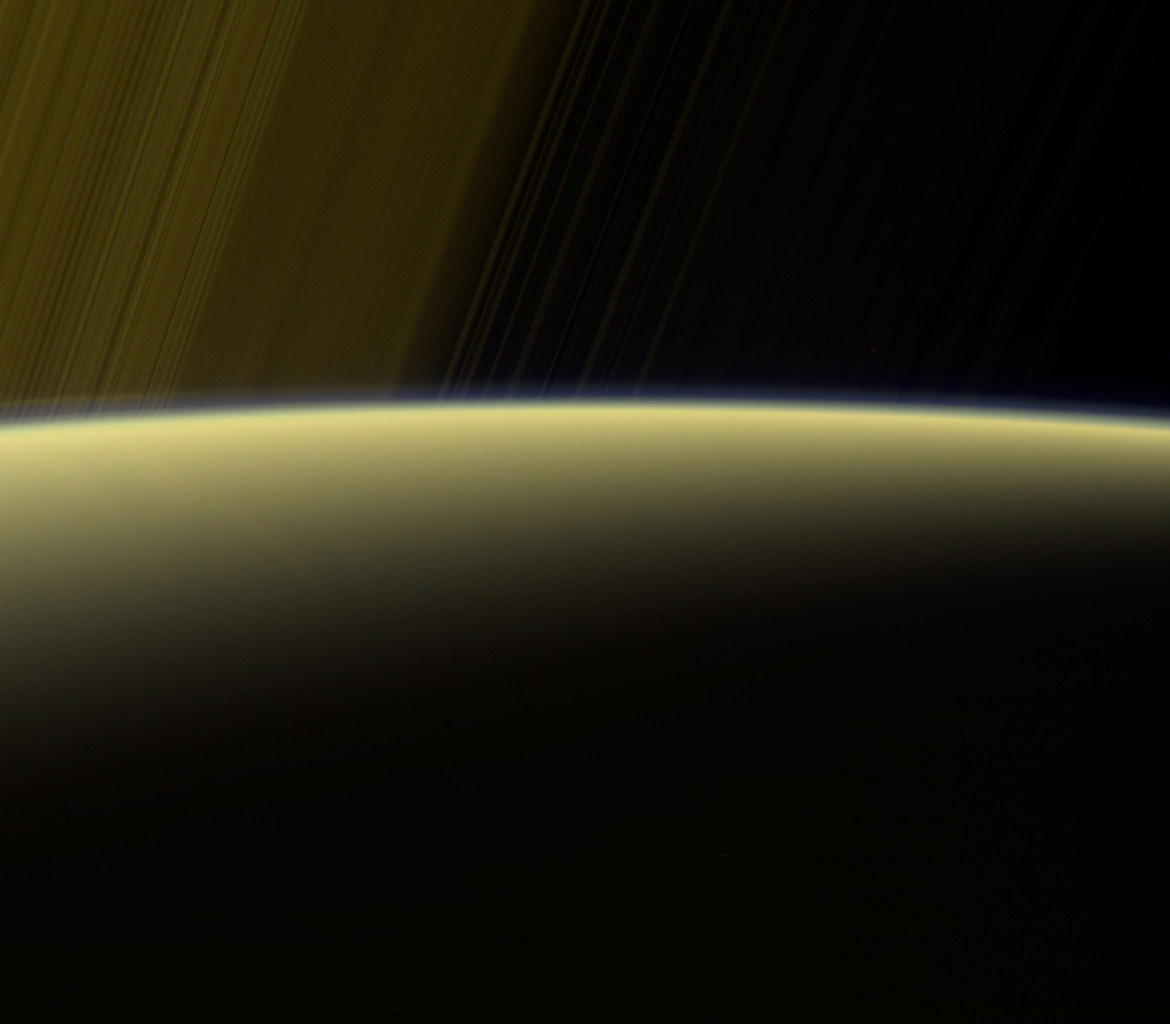NASA | JPL-Caltech | Cassini | 2016 Nov 22
A thrilling ride is about to begin for NASA's Cassini spacecraft. Engineers have been pumping up the spacecraft's orbit around Saturn this year to increase its tilt with respect to the planet's equator and rings. And on Nov. 30, following a gravitational nudge from Saturn's moon Titan, Cassini will enter the first phase of the mission's dramatic endgame. ...Click to play embedded YouTube video.
- This graphic illustrates the Cassini spacecraft's trajectory, or flight path, during the final two phases of its mission. The view is toward Saturn as seen from Earth. The 20 ring-grazing orbits are shown in gray; the 22 grand finale orbits are shown in blue. The final partial orbit is orange. (Credit: NASA/JPL-Caltech/SSI)
Between Nov. 30 and April 22, Cassini will circle high over and under the poles of Saturn, diving every seven days -- a total of 20 times -- through the unexplored region at the outer edge of the main rings.
"We're calling this phase of the mission Cassini's Ring-Grazing Orbits, because we'll be skimming past the outer edge of the rings," said Linda Spilker ...
Cassini's ring-grazing orbits offer unprecedented opportunities to observe the menagerie of small moons that orbit in or near the edges of the rings, including best-ever looks at the moons Pandora, Atlas, Pan and Daphnis.
Grazing the edges of the rings also will provide some of the closest-ever studies of the outer portions of Saturn's main rings (the A, B and F rings). Some of Cassini's views will have a level of detail not seen since the spacecraft glided just above them during its arrival in 2004. The mission will begin imaging the rings in December along their entire width, resolving details smaller than 0.6 mile (1 kilometer) per pixel and building up Cassini's highest-quality complete scan of the rings' intricate structure. ...
During these orbits, Cassini will pass as close as about 56,000 miles (90,000 kilometers) above Saturn's cloud tops. But even with all their exciting science, these orbits are merely a prelude to the planet-grazing passes that lie ahead. In April 2017, the spacecraft will begin its Grand Finale phase. ...
